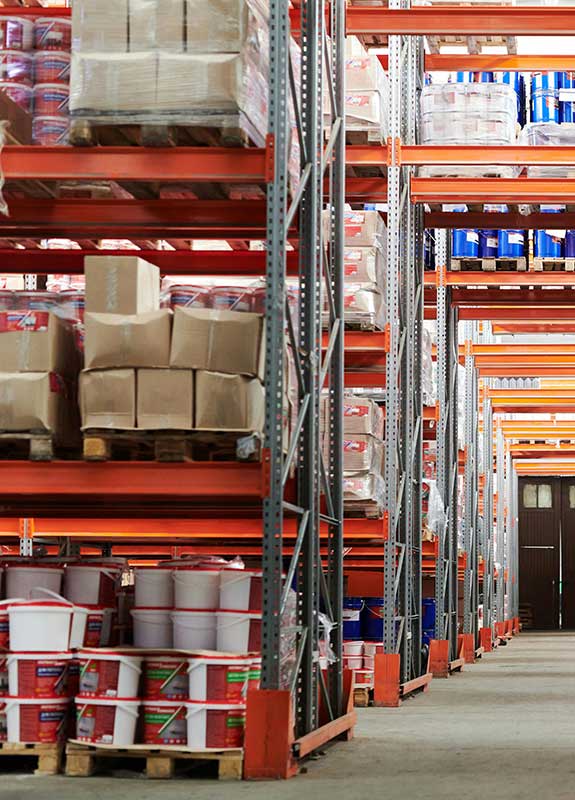Reduce Manufacturing Costs Using Lean Manufacturing Tools
Adopting lean manufacturing principles can reduce manufacturing costs. How? In “Effective Ways to Reduce Manufacturing Costs,” we briefly discuss how adopting lean manufacturing principles can reduce manufacturing costs by increasing employee productivity, reducing inventories and production time, and cutting errors and scrap by half. Lean manufacturing principles have been around a long time, but this method is still relevant in 2024. In this blog, we’ll explore lean manufacturing, including its business benefits and strategies you can use to get started.
What is Lean Manufacturing?
Lean manufacturing is a simple and effective way of conducting business processes. It characterizes all activities as either value-added or non-value-added (waste).
Waste is defined as any activity that does not add value from the customer’s perspective. According to research conducted by the Lean Enterprise Research Centre (LERC), 60% of production activities in a manufacturing operation are waste—adding no value for the customer.
Check this list of Lean Terms and Definitions to get a fast primer on lean manufacturing. These terms describe the “tools” lean manufacturing uses to eliminate waste, improve your manufacturing operations, and thereby reduce manufacturing costs.
The five main lean manufacturing principles are:
- Specify value from the standpoint of the end customer
- Identify all the steps in the value stream and eliminate all non-value-added activity
- Create flow for value-creating process steps
- Let customers pull value from upstream activity
- Pursue perfection through continuous improvement
Eliminating Waste
A great place to start implementing lean production is by understanding the forms of waste: waiting, transportation, inventory, motion, overproduction, over-processing, defects, and wasting talent.
Before you even begin to implement lean manufacturing strategies, you must first understand what creates value for a customer. Only a fraction of the total production time and effort actually adds value for the customer. By understanding what the customer wants, companies can identify all the non-value activities (waste) within the organization.
Waste can be defined as any activity that does not add customer-perceived value to the product. Waste can take many forms, such as overproduction, waiting time, excess inventory, over-processing, defective units, and transportation. By identifying the forms of waste within the company, businesses can then find ways to eliminate that waste.
Let’s take a closer look at different types of waste:
- Transportation waste occurs when materials are moved from one place to another. This type of waste is caused by the inefficient layout of machines and factories. The result is wasted time between value added processes.
- Raw material, work in process, and standing inventory are all non-value-added, and therefore, have the potential to create inventory waste. Excess inventory is the result of overproduction, and it actually hides and even creates other forms of waste. For instance, space is wasted when stock rooms are filled with finished goods.
- Any movement of a person’s body that does not add value is wasted motion. Excess motion, such as extraneous lifting, walking or reaching can result in fatigue, injuries, wasted time and frustration.
- Waiting occurs when a person or machine must wait to do needed work. Typically, 99% of a product’s time is spent waiting. This waste also occurs when a worker watches a machine run automatically.
- Overproduction adds lead time, reduces productivity, and hides other waste forms. Furthermore, it enables defects and causes scrap and must be eliminated to implement lean processes.
- Processing waste is an operation that the customer does not pay for. This can include an extra operation to hold an unnecessary tolerance or to rework defective parts. “Just in case” operations, because customer needs are not truly understood, are also an example of processing waste.
- Defects result in scrap or rework and have the serious potential to lead to compromised customer expectations and poor delivery and productivity. Defects actually affect all of the other forms of waste and are often the result of not matching the process to the need.
Once you have identified the types of waste, you must estimate the size of these wastes. How will eliminating these wastes change the production process? What are the reasons we have been operating with these wastes? By identifying the original problem, you can come up with a solution that will eliminate waste and reduce overall cost.
Inventory Reduction
Our “Effective Ways to Reduce Manufacturing Costs” series introduced the importance of inventory reduction in lean manufacturing. After waste has been eliminated, companies must then assess their inventory costs. By reducing all in-process or current inventory, businesses can lower costs and, ultimately, raise their profits. While companies use several techniques to go about reducing inventory, the Just-in-Time (JIT) strategy is one of the more popular techniques.
According to the principles of the Just-in-Time strategy, inventory is considered to be waste. Many companies view a warehouse full of goods as an asset to their business; however, lean manufacturing considers goods that are not being shipped or sold wasteful. If those products are just sitting there (racking up storage costs) and no profit is being made on them, the company is essentially wasting money. The Just-in-Time strategy encourages companies to hold little or no inventory beyond what is required for immediate production or distribution.
With that in mind, you do not want to get rid of your inventory entirely. On-hand inventory can alleviate the stress of unforeseen production problems, such as holdups, mechanical errors, equipment errors and workforce challenges. The extra inventory can help protect your business should a problem arise.
The goal of the JIT strategy is to help businesses make sure they have the right amount of inventory on hand as it is needed. Any extra is considered to be a waste. For this strategy to work, consistency is key. Find suppliers that will comply with the Just-in-Time strategy and offer a reasonably priced, high-quality product.
The Just-in-Time strategy reduces costs, eliminates waste and improves efficiency, allowing the company to get products to the customer on time with little cost.
Measuring the Benefits of Lean Manufacturing
While lean manufacturing principles can have many benefits across a company, here are the two crucial results of lean manufacturing:
Cost savings drop directly to the bottom line.
For example, assume your product costs are split evenly between raw material, labor and overhead. A 30% reduction in labor means your product cost decreased by 10% (.3 X 33.33). That might be a 10% increase (or more) in your EBITDA (Earnings Before Interest, Taxes, Depreciation and Amortization). Safe to say your controller would welcome a 10% improvement in bottom line due to increased efficiencies!
Higher production of finished goods.
If labor is your bottleneck, which is likely due to today’s tight marketplace, a 30% reduction in labor means you can produce one-third more finished goods. Or you can apply that labor to another product that is in tight supply. No matter your scenario, lean manufacturing has benefits for labor, management and customers.
Emerging Trends in Lean Manufacturing in 2024
As lean manufacturing continues to grow, new trends emerge. Here are some of the most important trends within lean manufacturing in 2024:
-
Integration of Industry 4.0 Technologies:
Industry 4.0, which fuses digital technologies with traditional manufacturing processes, continues to be a driving force in lean manufacturing. In 2024, we anticipate a deeper integration of technologies such as the Internet of Things (IoT), artificial intelligence (AI), and advanced analytics. These technologies enhance lean manufacturing by enabling visibility, connectivity, and data-driven decisions.
-
Sustainability:
Manufacturers worldwide have made sustainability a priority. Lean manufacturing fits right into this priority, as it minimizes waste. Lean manufacturing principles are expanding to include reusing and recycling materials, reducing environmental impacts, and conserving natural resources.
-
Lean labor:
The human aspect of manufacturing shouldn’t be left out of lean manufacturing. “Lean labor” includes emphasizing employee well-being, engagement, and skill development, as well as promoting a culture of continuous training and improvement. Automation can also help free up employees for more value-added tasks.
-
Predicting maintenance:
Lean manufacturing has long involved predictive maintenance (proactively maintaining equipment instead of waiting until it breaks down). Now, machine learning is opening up new possibilities in this field. Machine learning algorithms can analyze past data to predict when equipment is likely to fail.
-
Agile manufacturing:
Agile manufacturing practices, such as modular production setups and quick changeovers, are being integrated into lean strategies. This agility allows manufacturers to quickly adjust to changes in market trends, consumer preferences, and unexpected disruptions.
-
Strength-based thinking:
This is an interesting trend—it involves a reimagining of the lean manufacturing perspective. Most applications of lean thinking assume that there is a hypothetical perfect state for each process or operation, and that the current reality deviates from perfection due to inefficiencies and waste that must be eliminated. The strength-based approach to lean manufacturing doesn’t only focus on what is inefficient, but also identifies what is already working well and works to further improve those systems. This approach may be more natural to work with and more sustainable in the long term.
Looking to Get Leaner?
To learn more about lean manufacturing in even more depth, download our whitepaper: Lean Manufacturing Insights. This informative guide will cover the principles of lean production in more detail and show you how to eliminate waste and reduce manufacturing costs through lean manufacturing strategies.
Here at BASM, we believe that an ERP / MRP system can fit in well at a lean manufacturing organization. This software allows us to mirror your lean processes in software systems, supporting waste reduction and cost reduction in the process. We can help implement, customize, and integrate your ERP or MRP system across your entire business.
We want our clients to be better and more profitable at what they do. Adding BASM as your partner is a win for everyone. Contact Us now to find out how partnering with BASM can impact your results.






